RARE! Original WWII Japanese Campaign Map Pearl Harbor & Pacific Theatre Invasion Progress


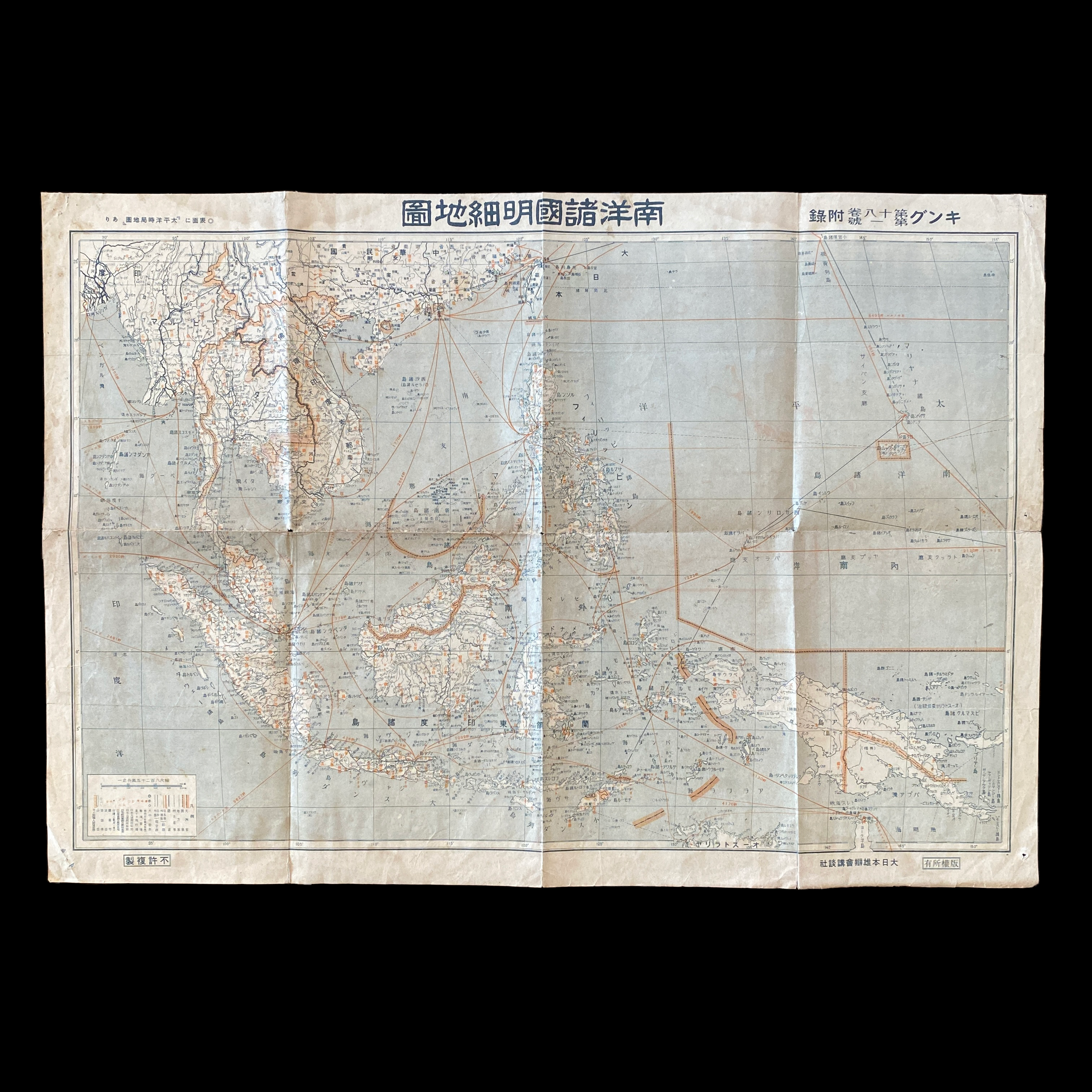
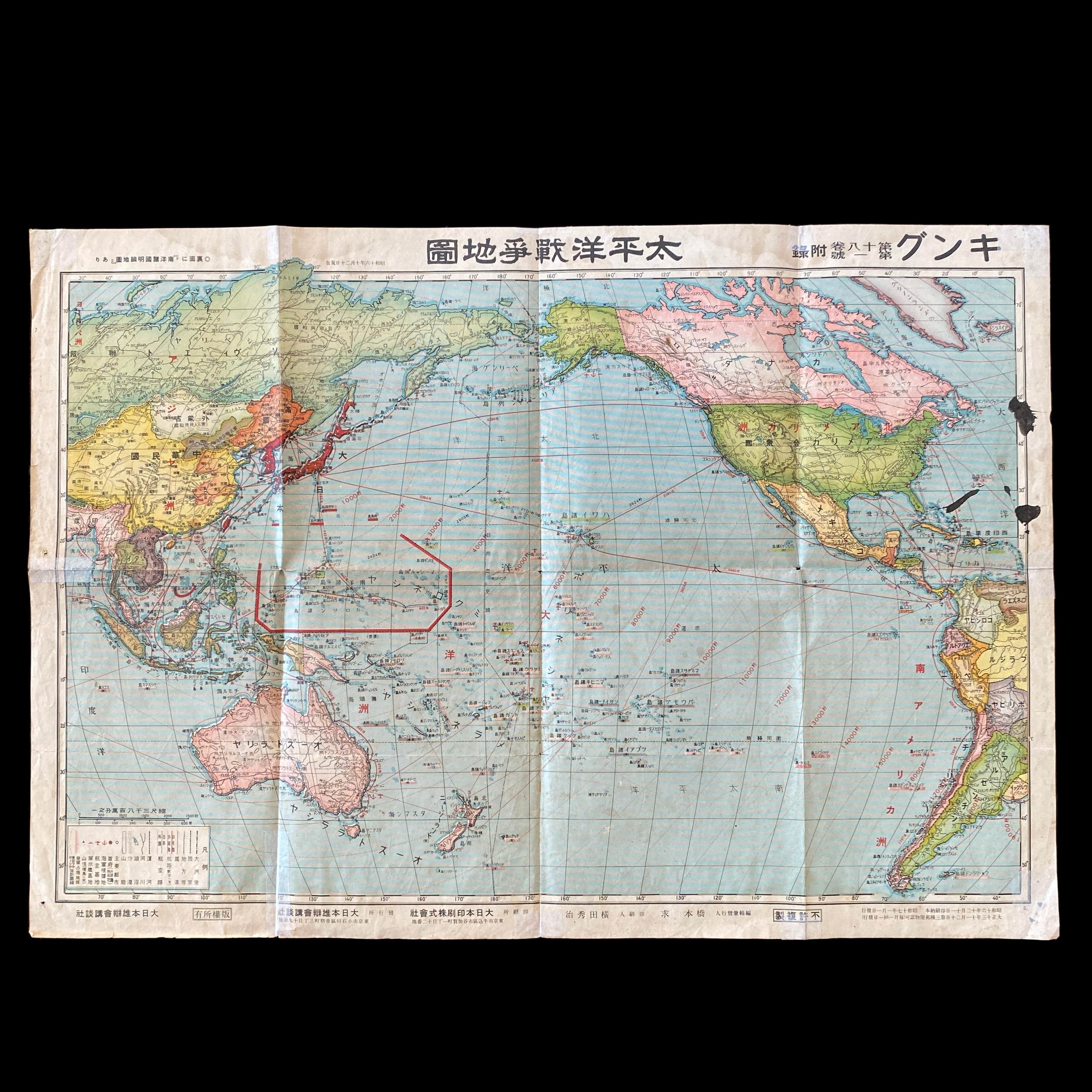
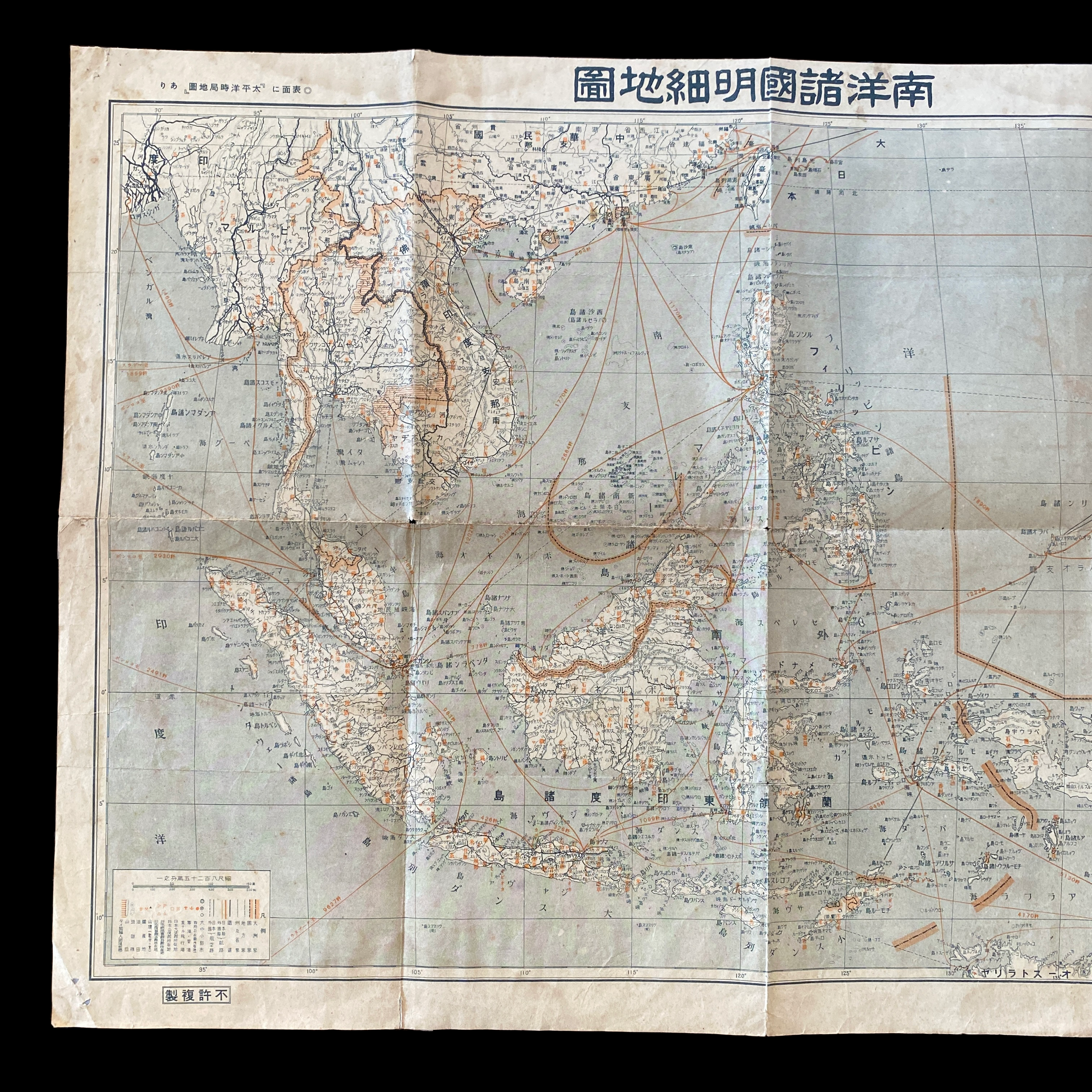
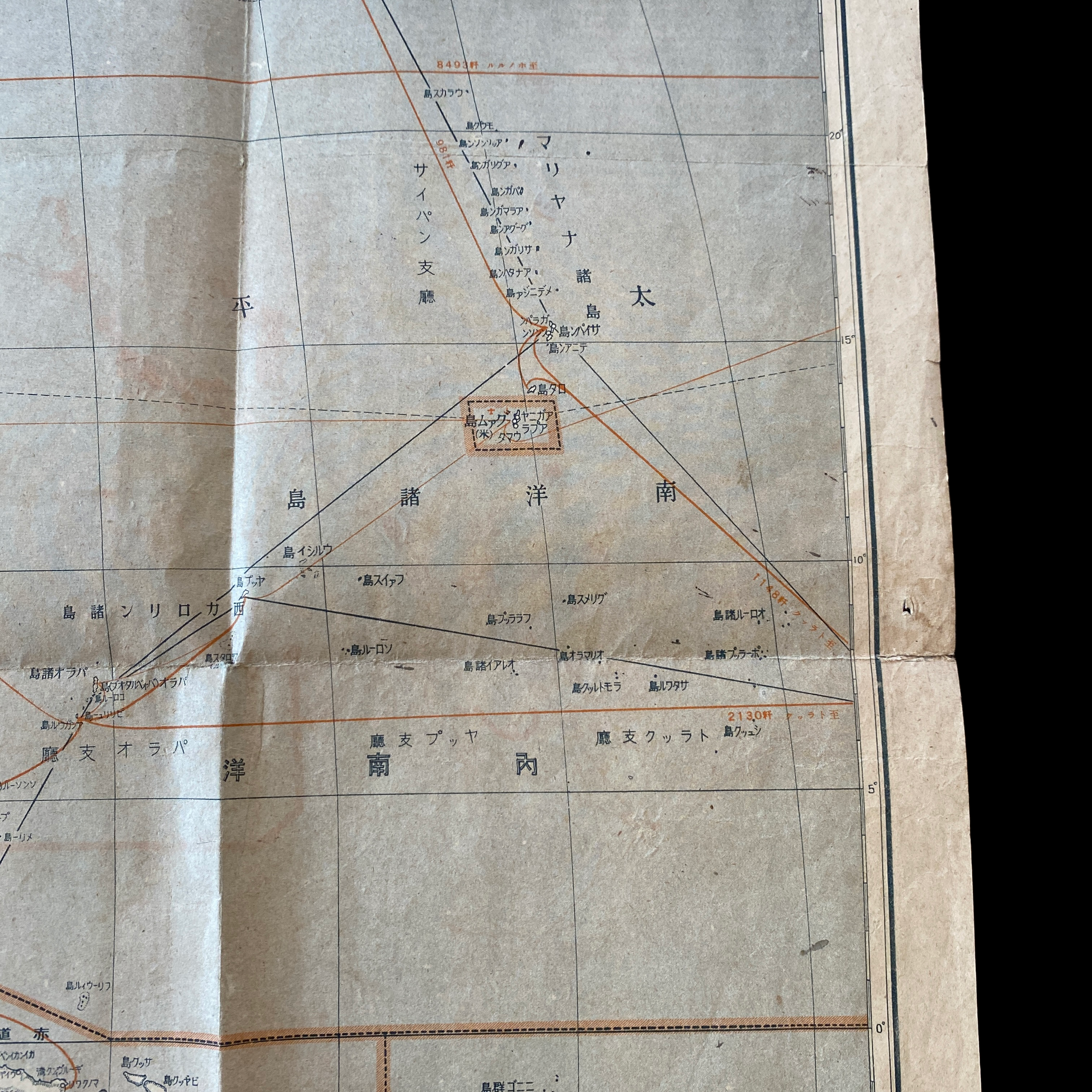
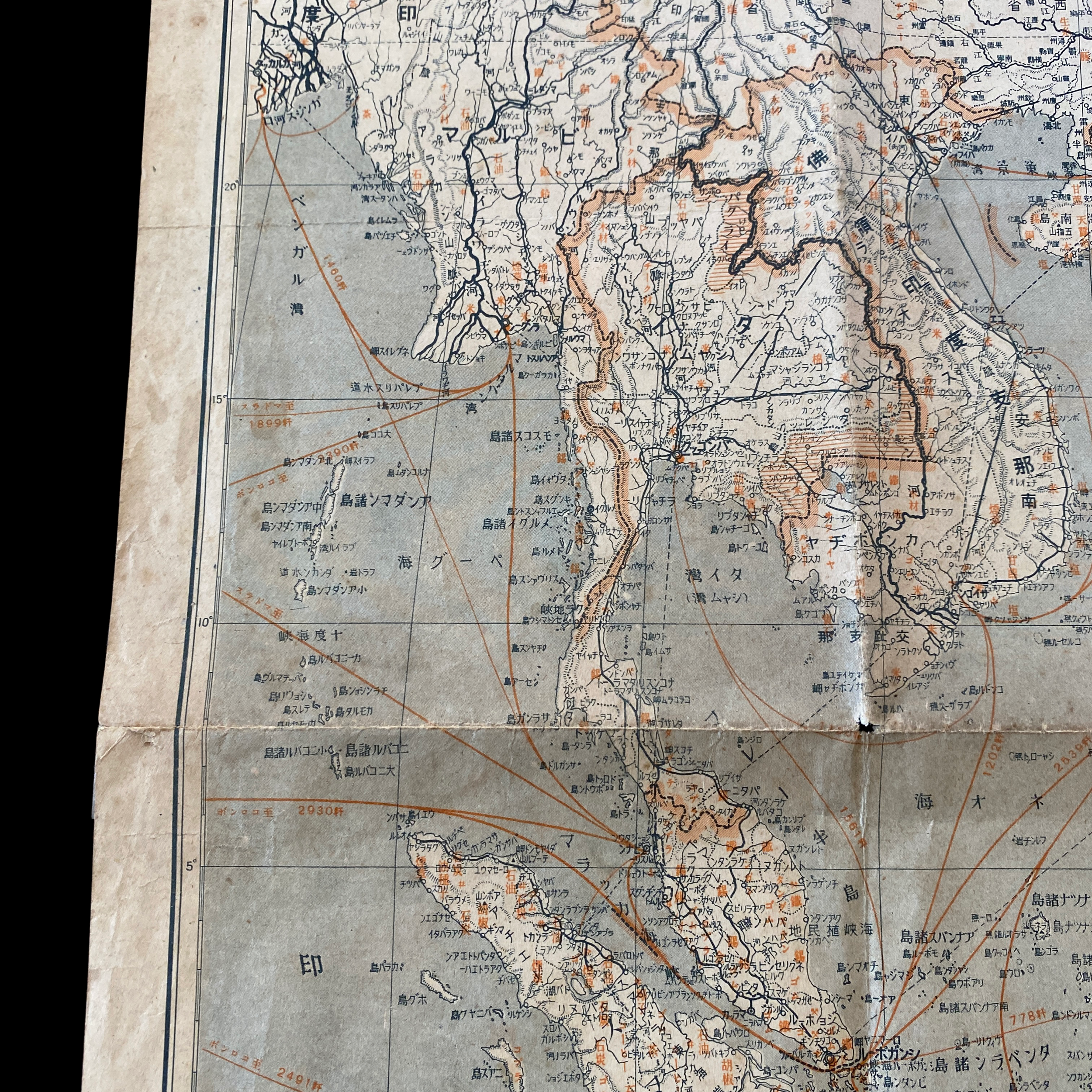
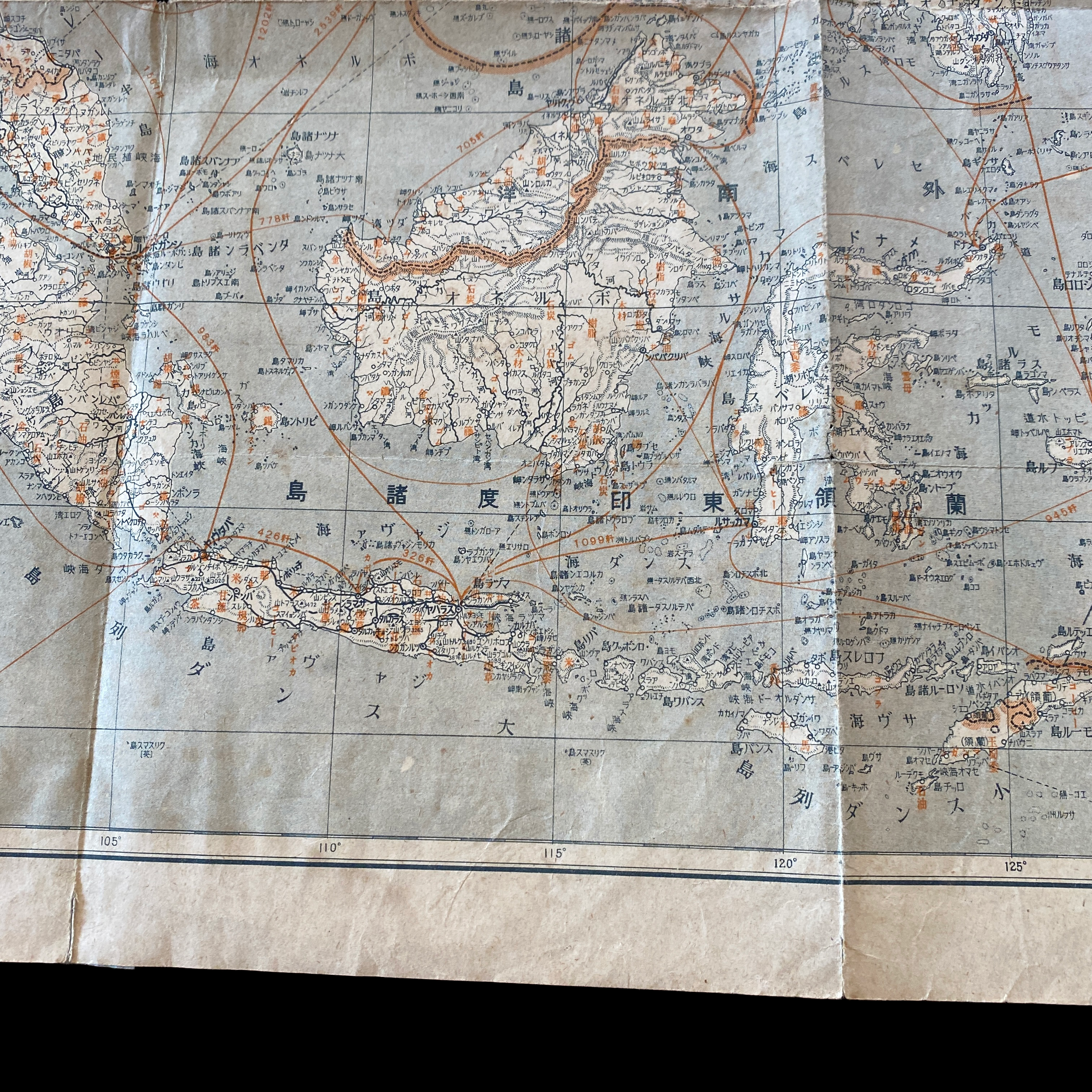
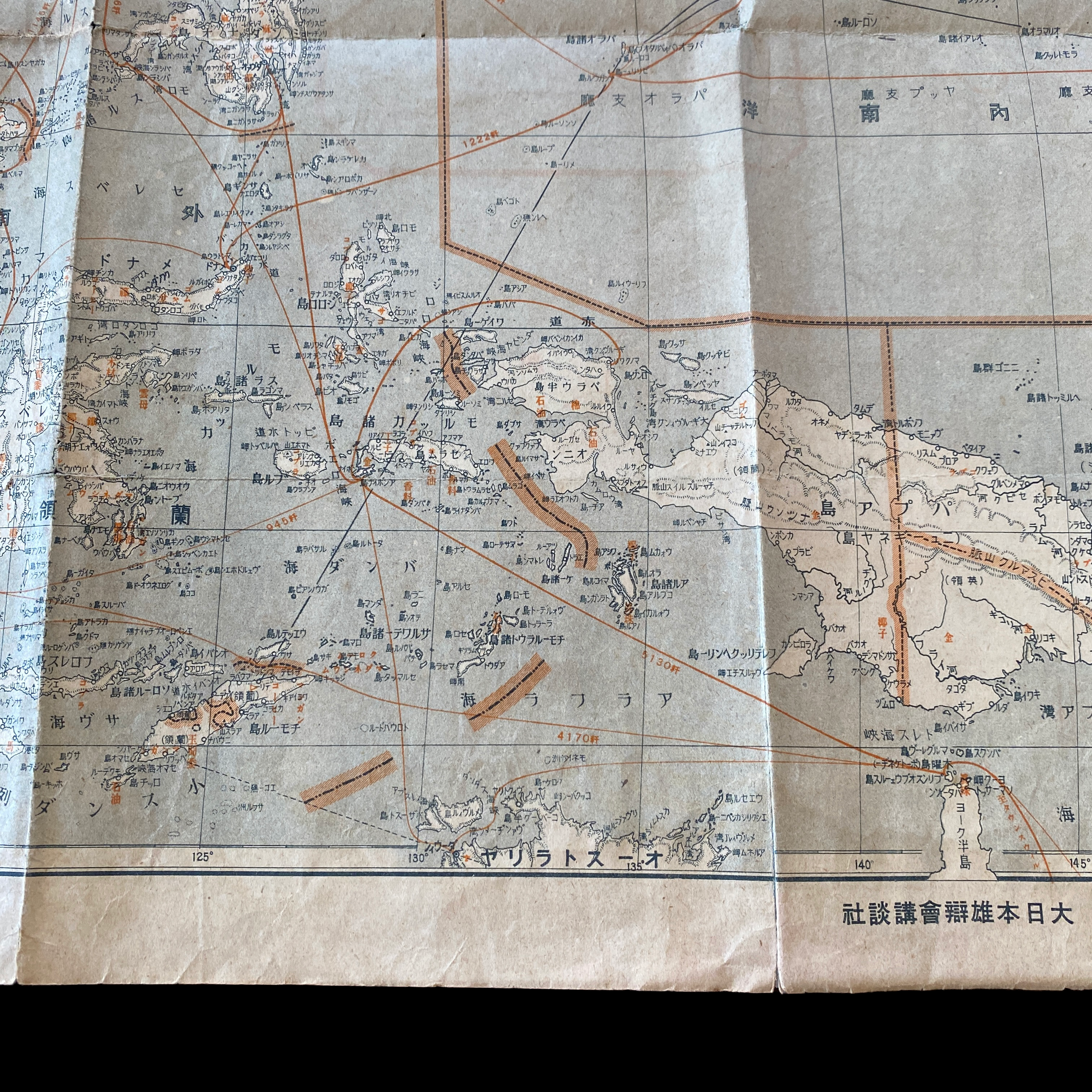
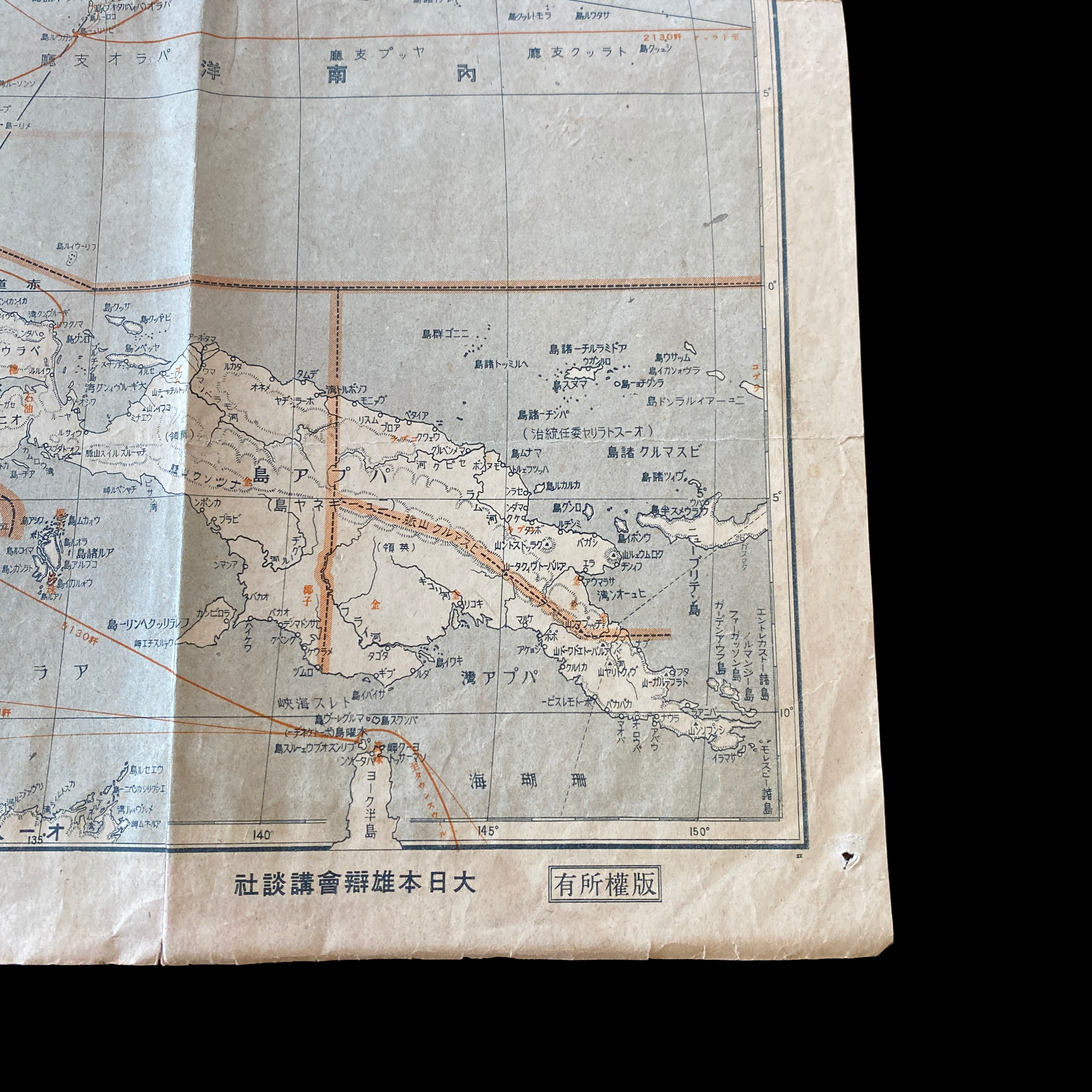
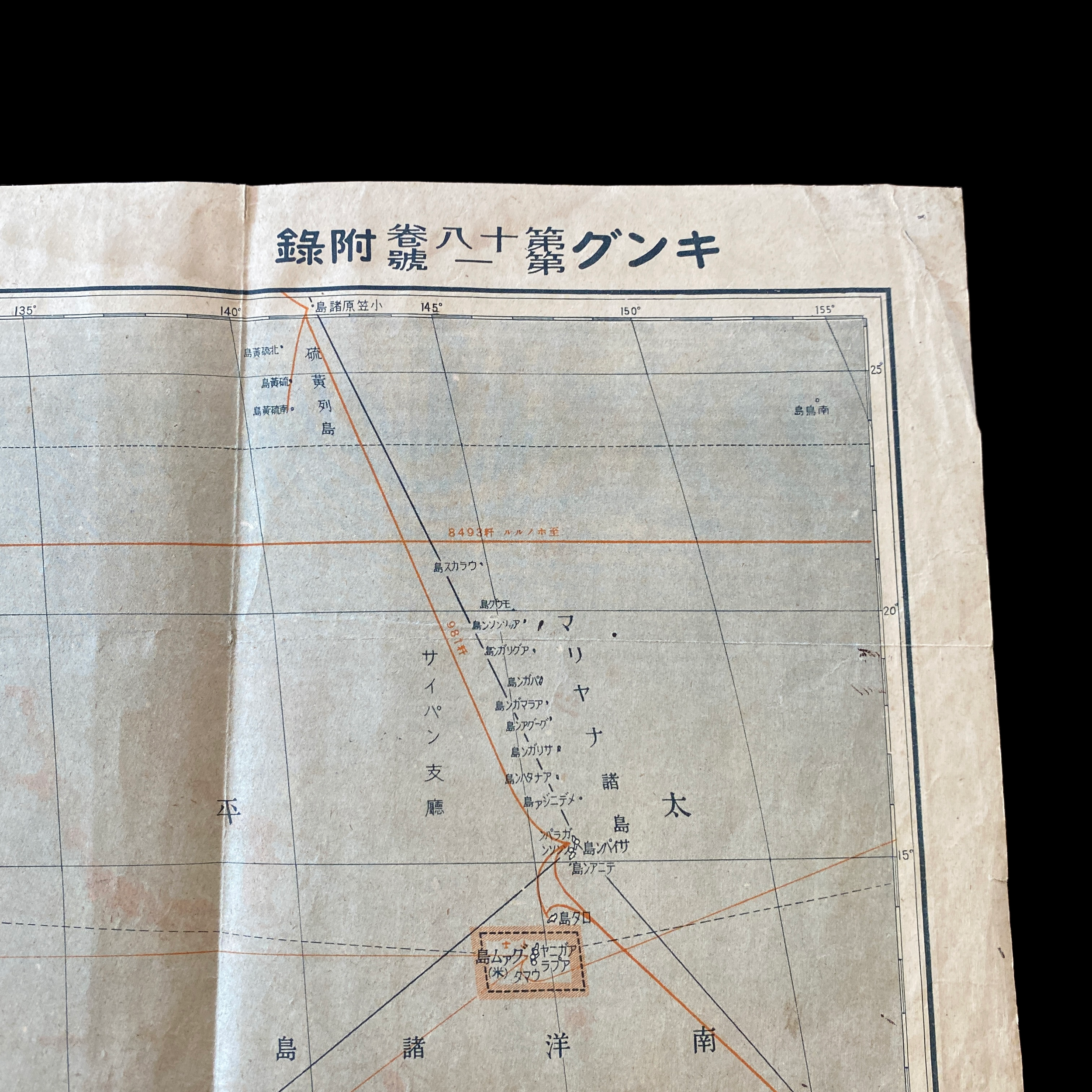
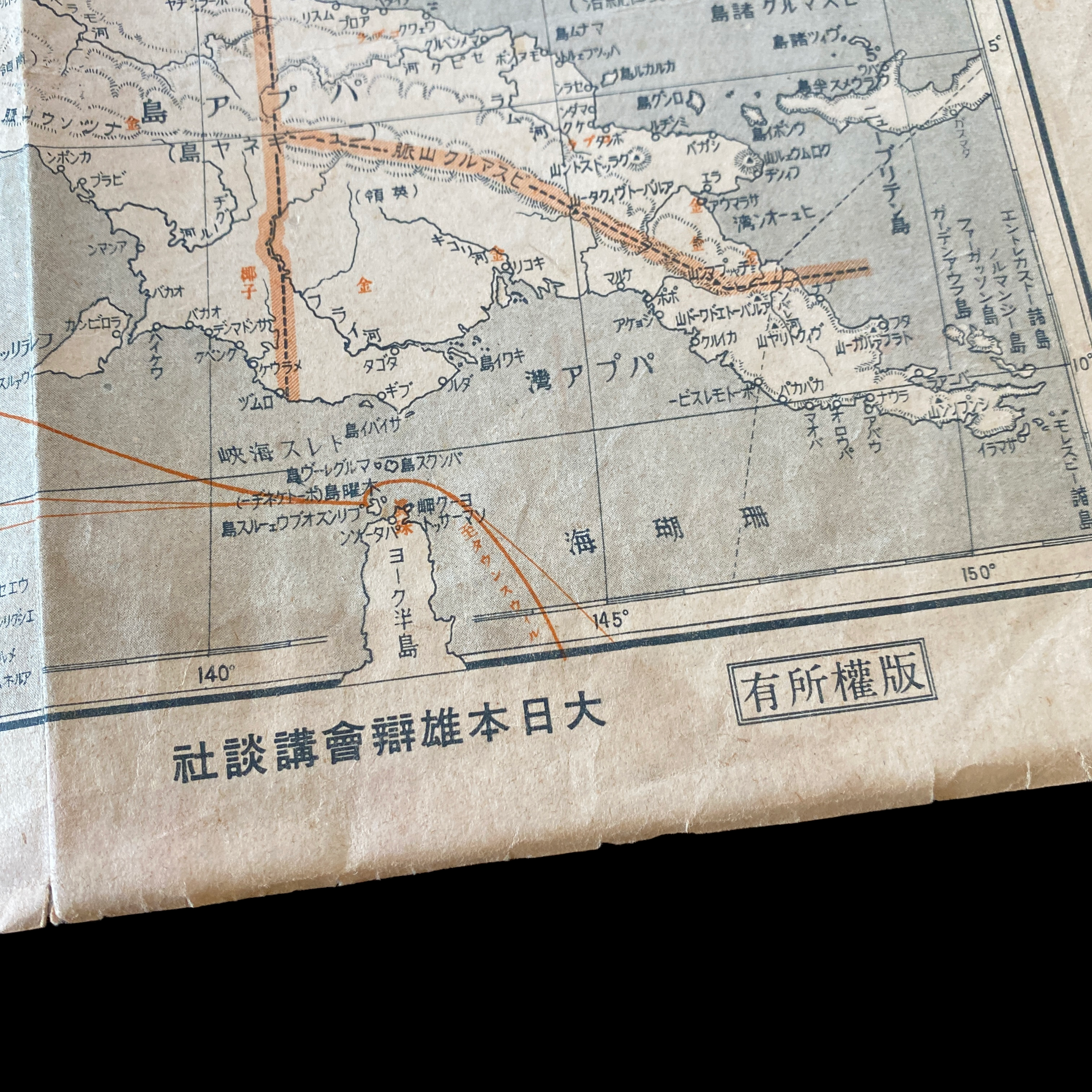
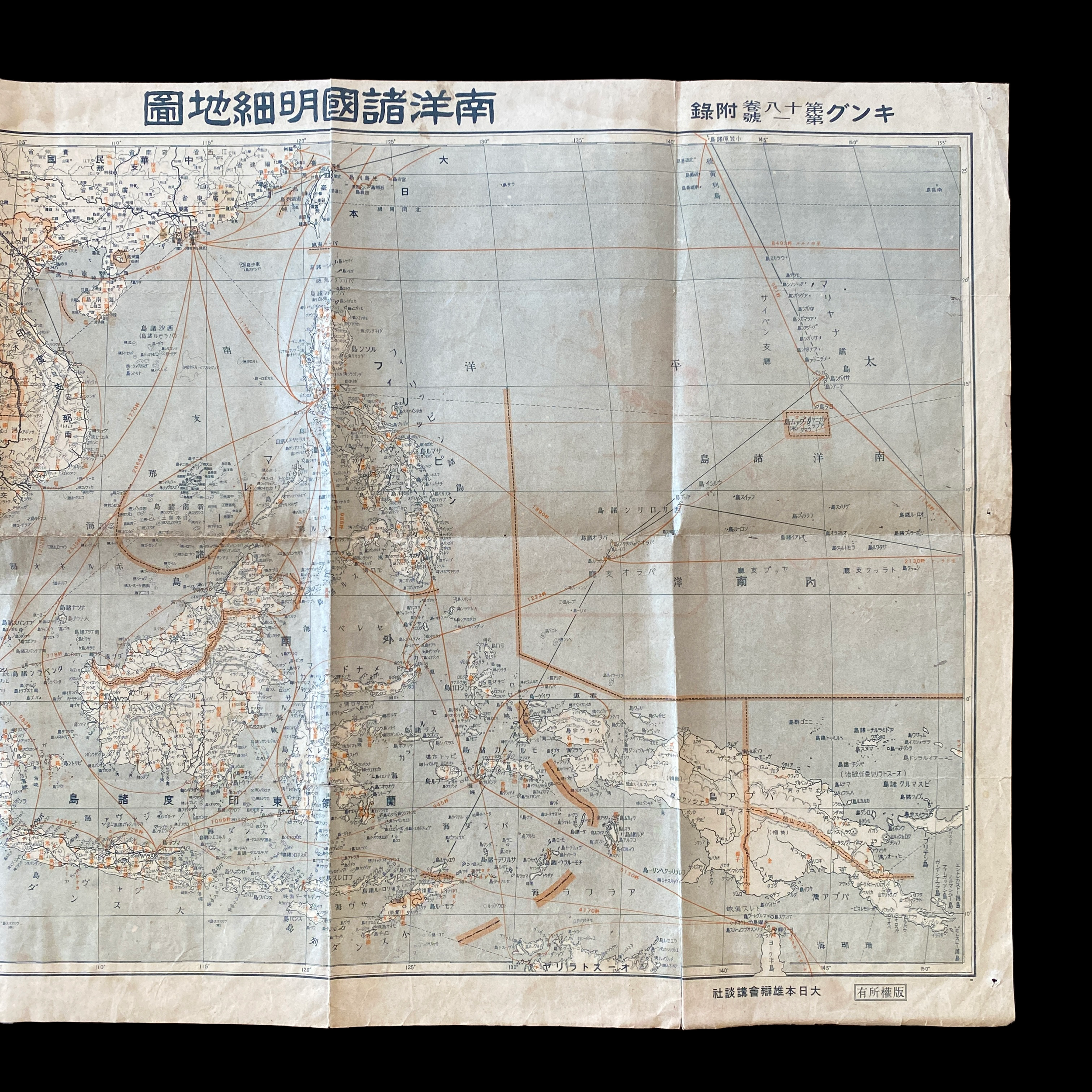
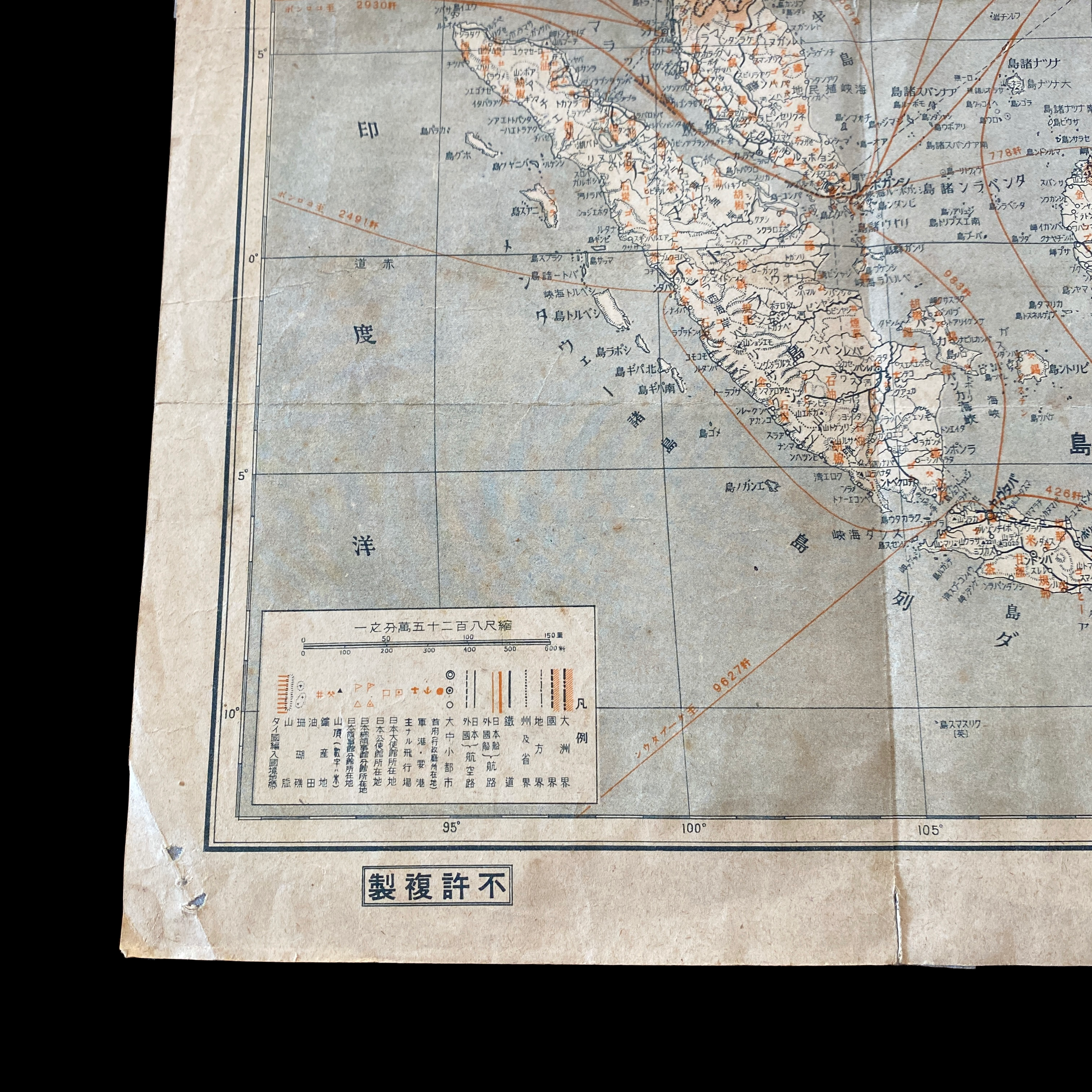
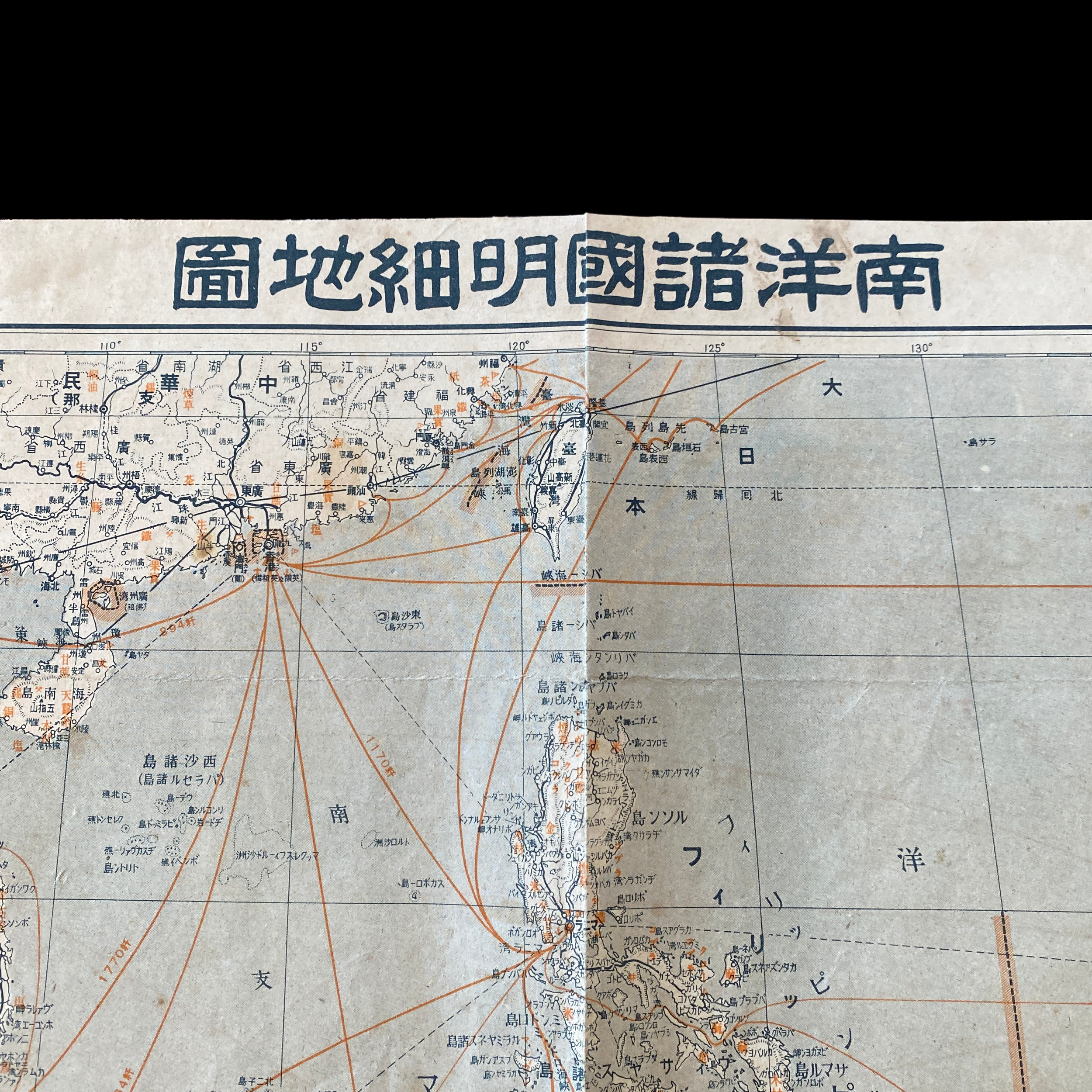
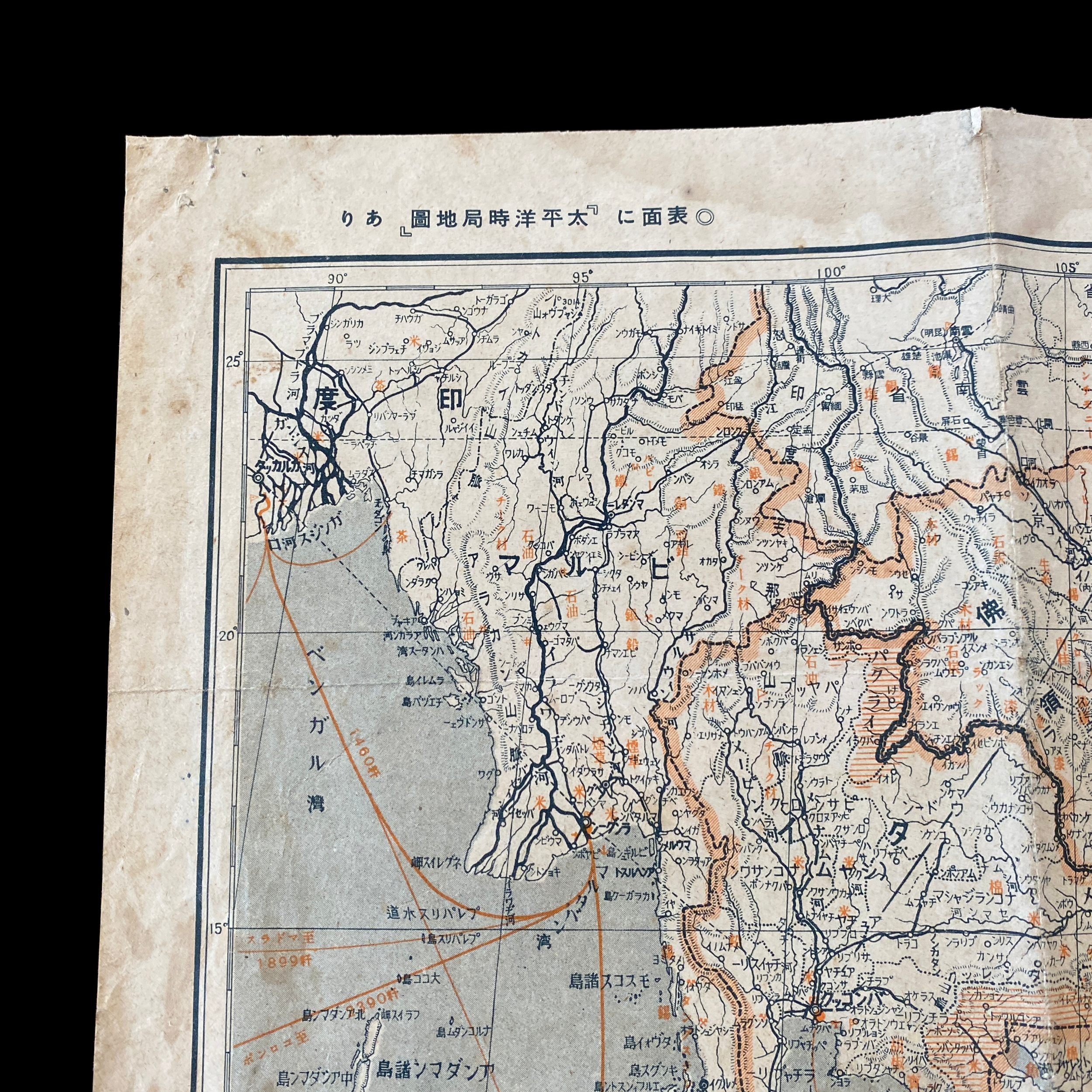
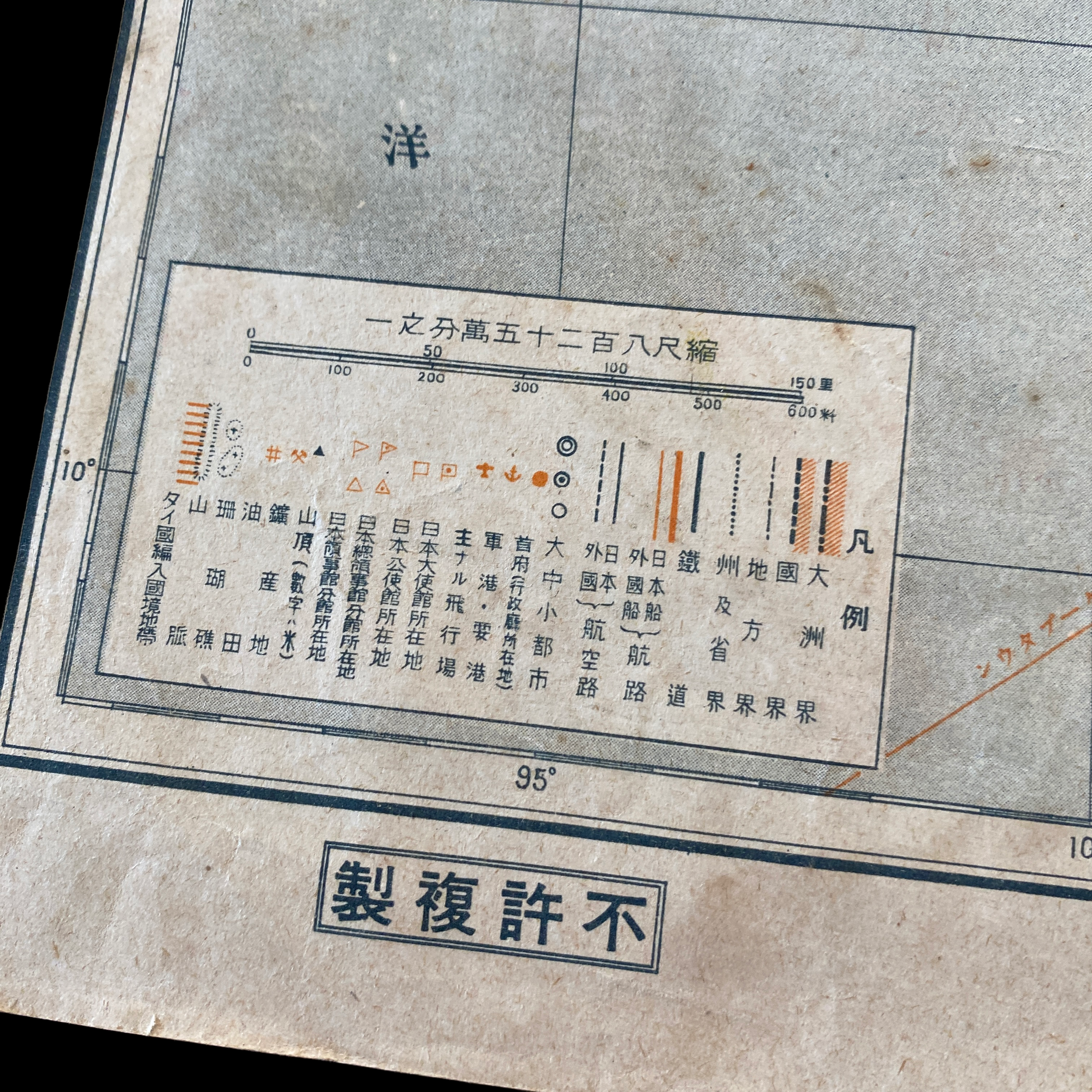
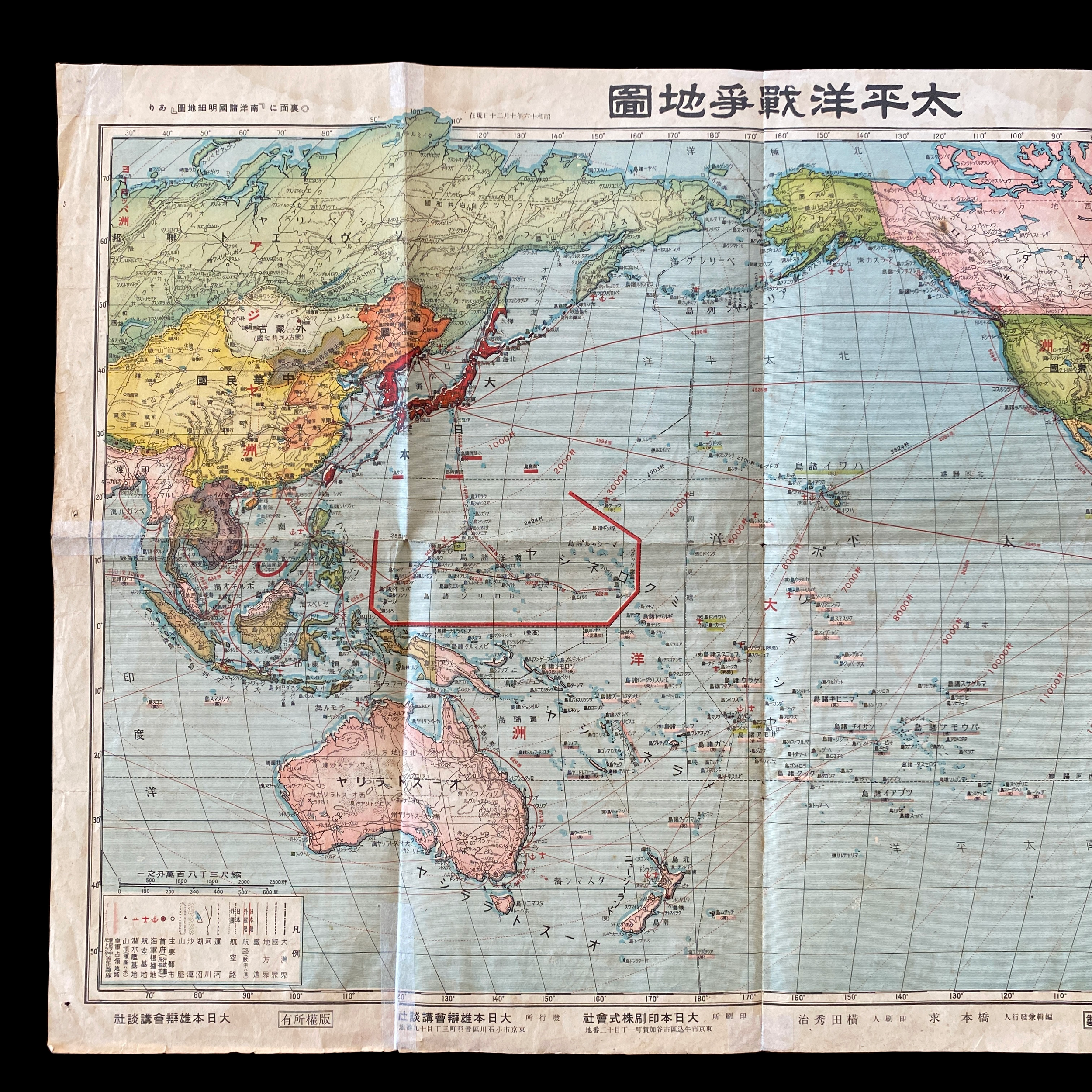
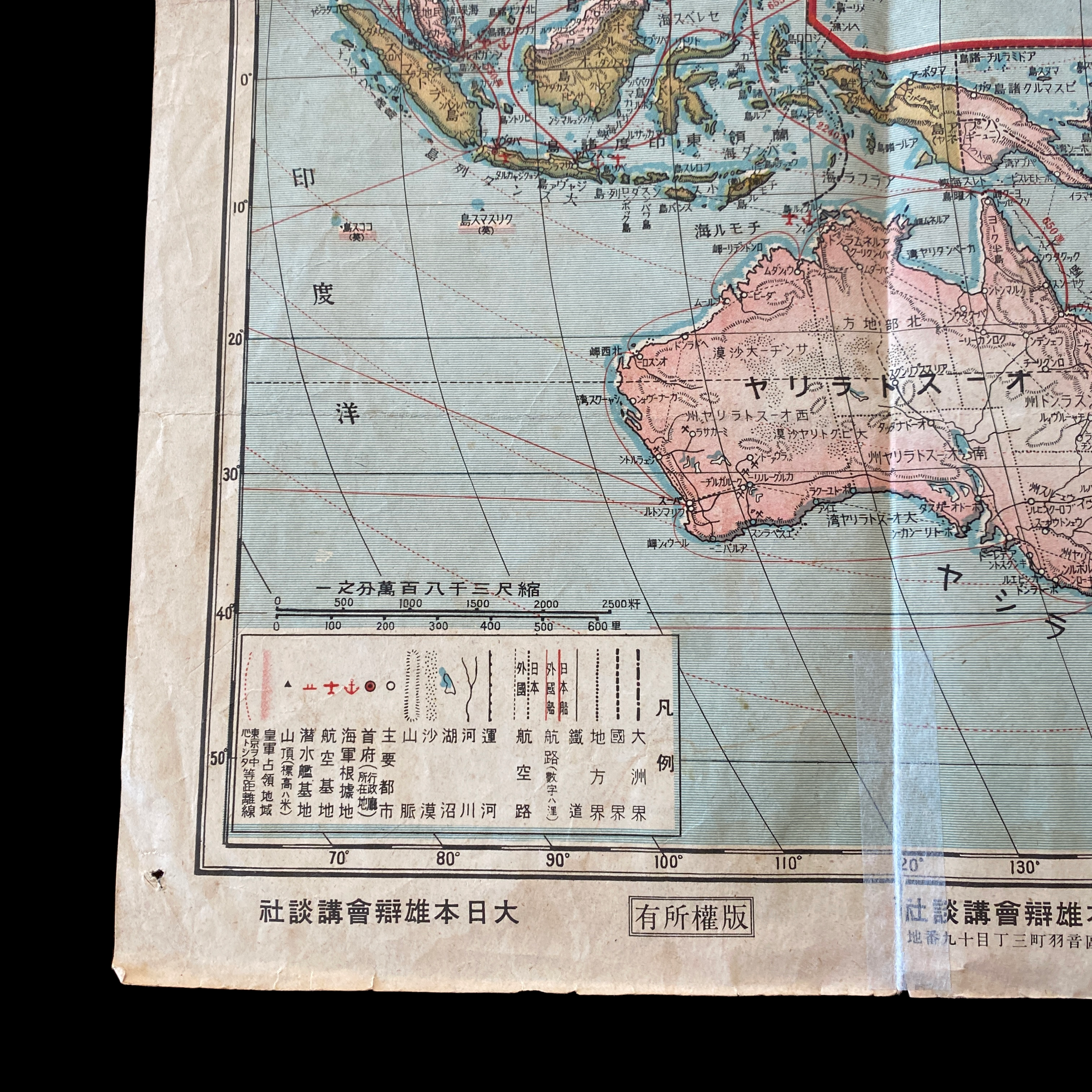
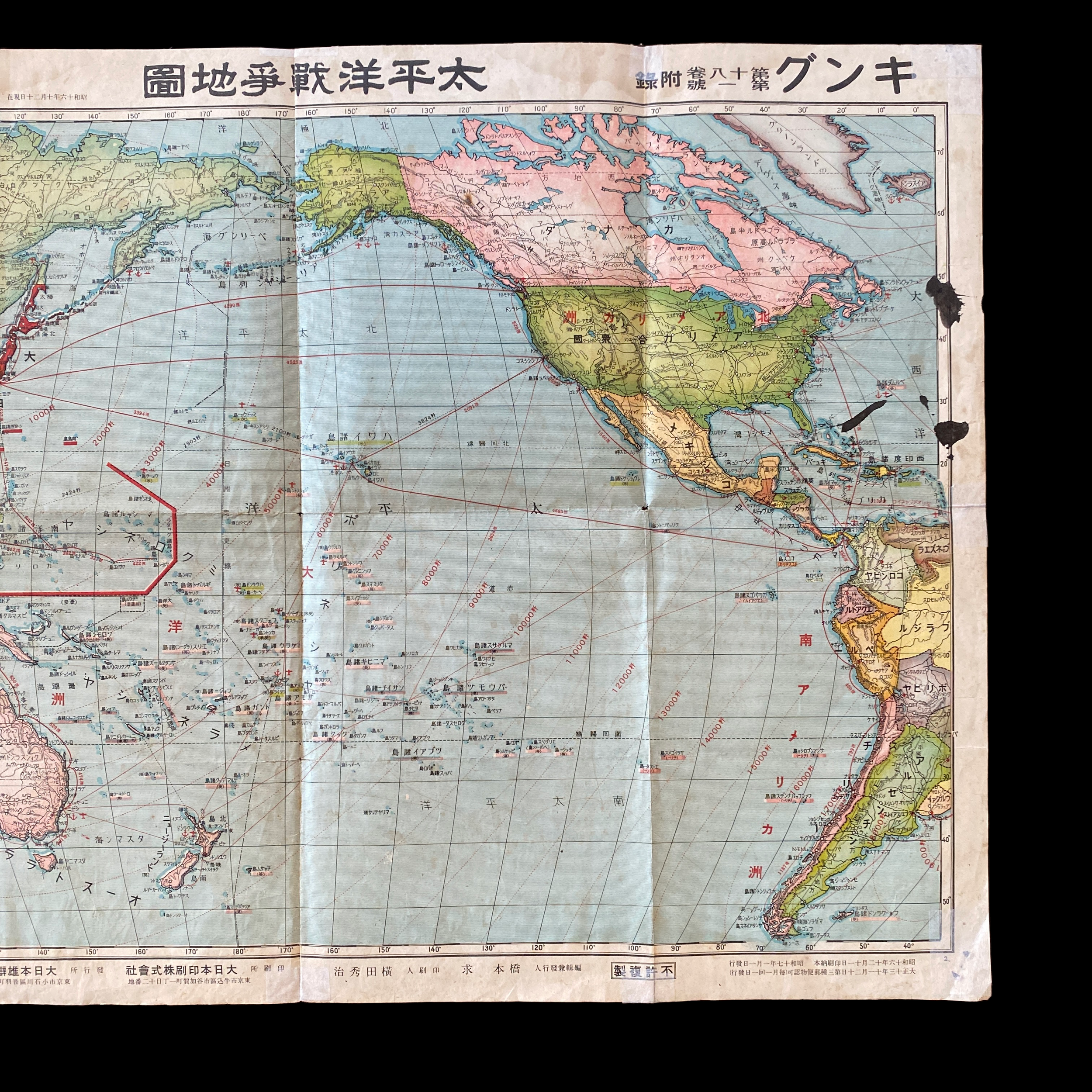
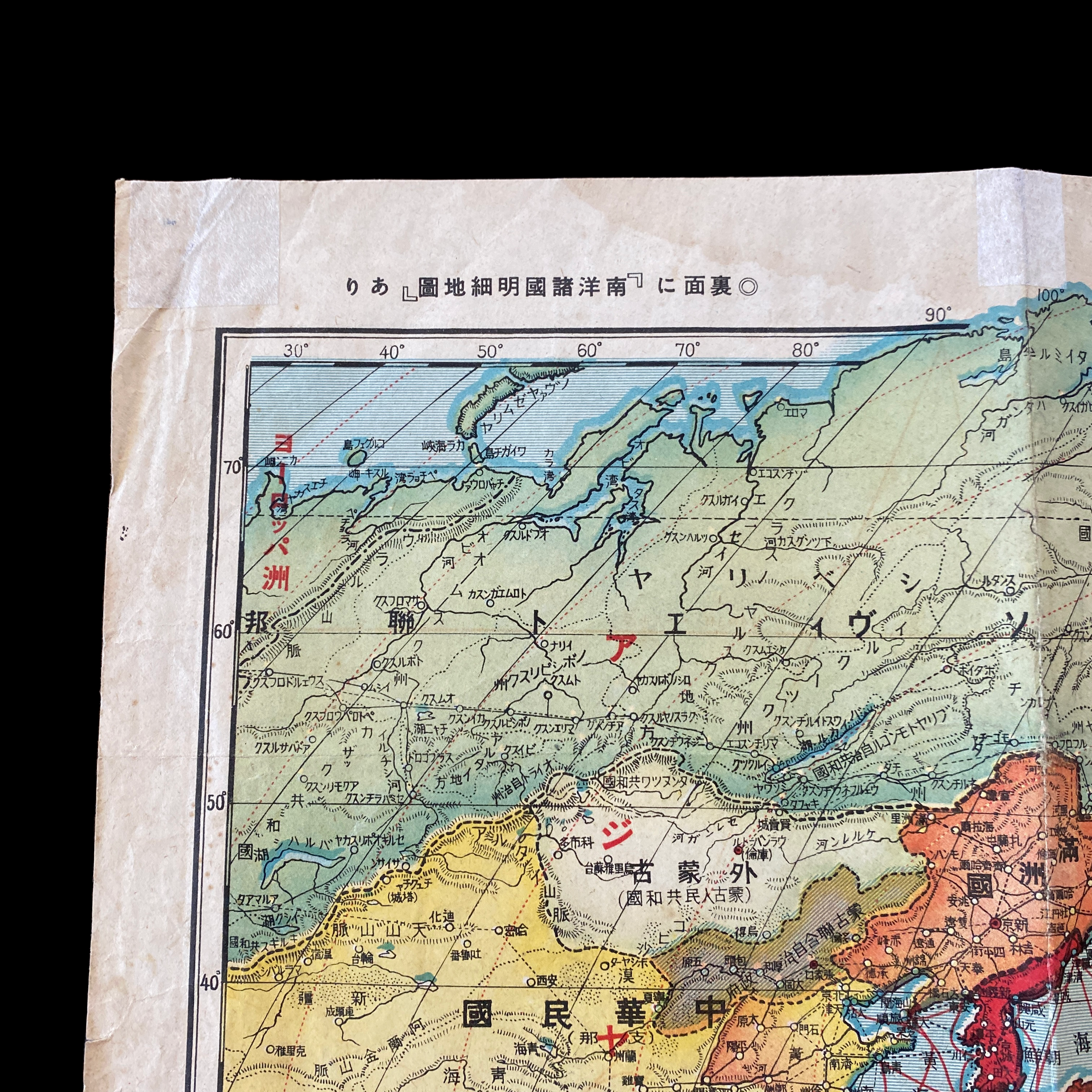
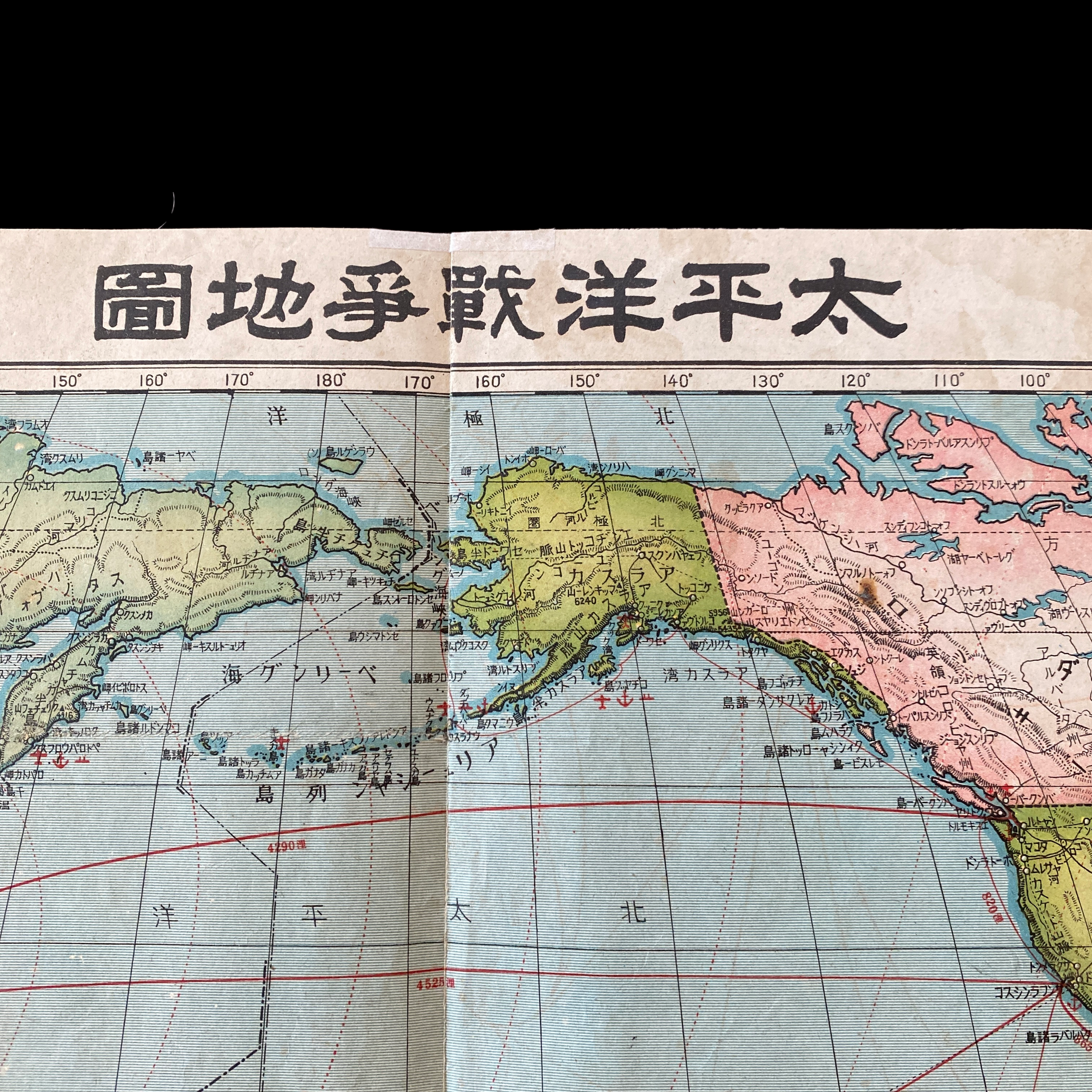
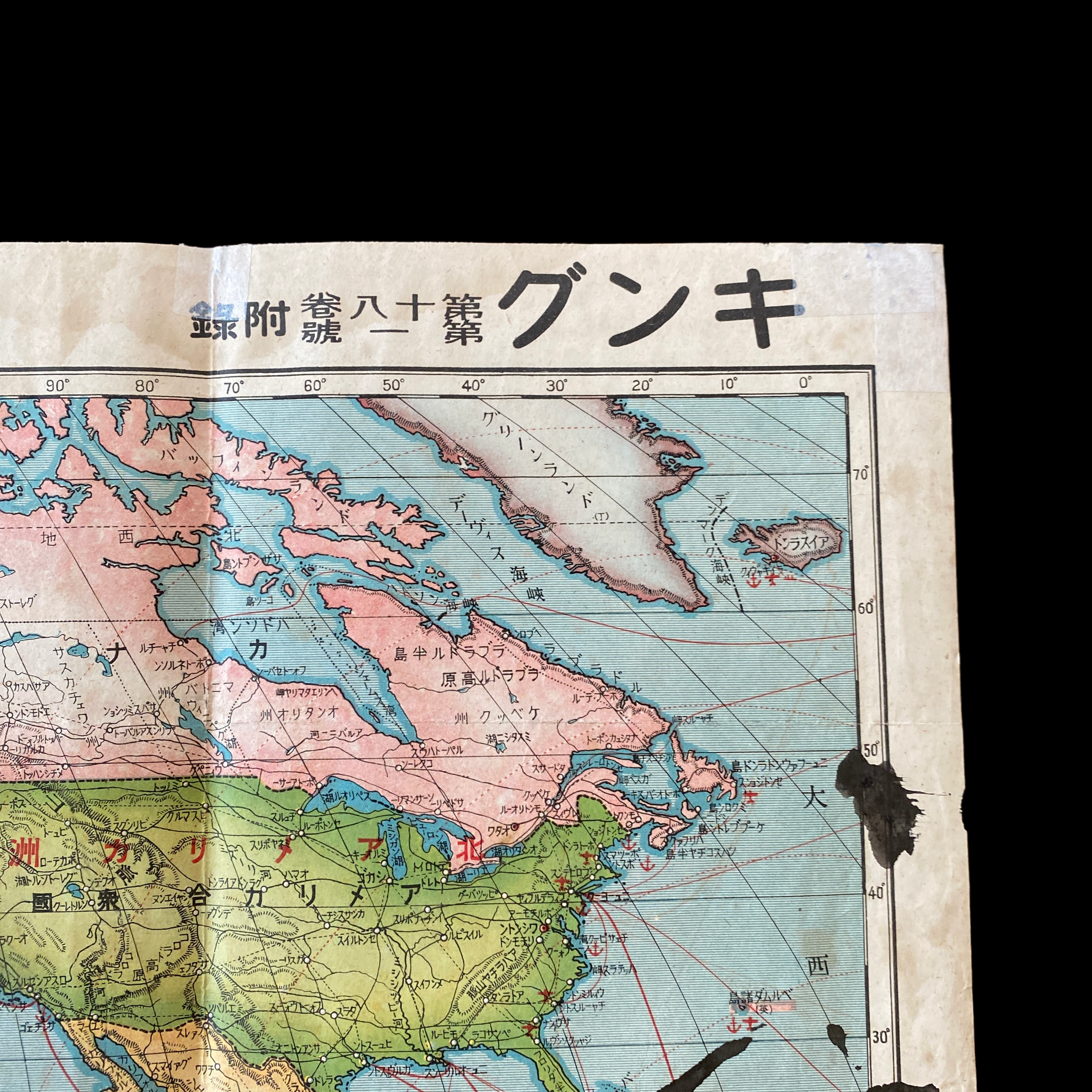






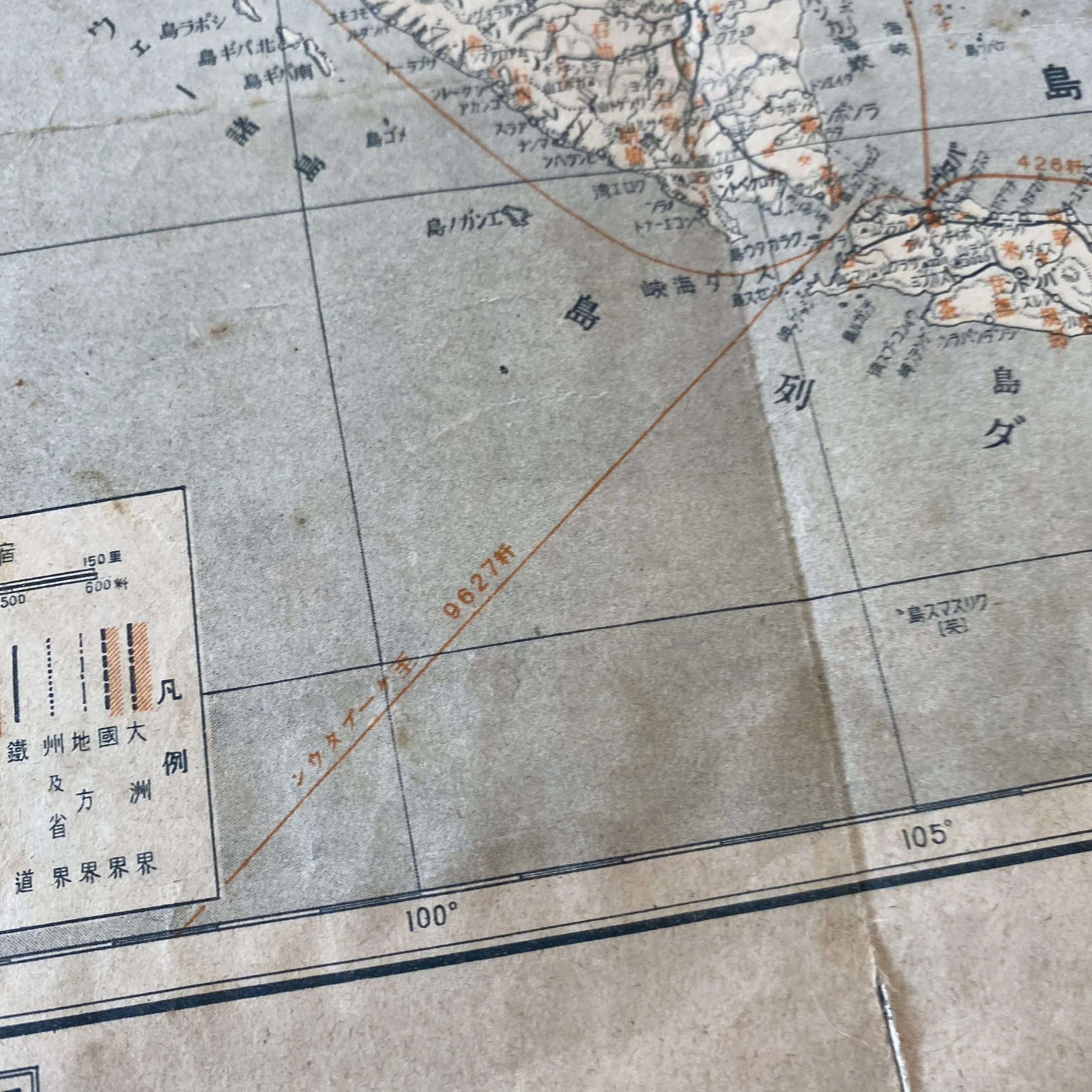






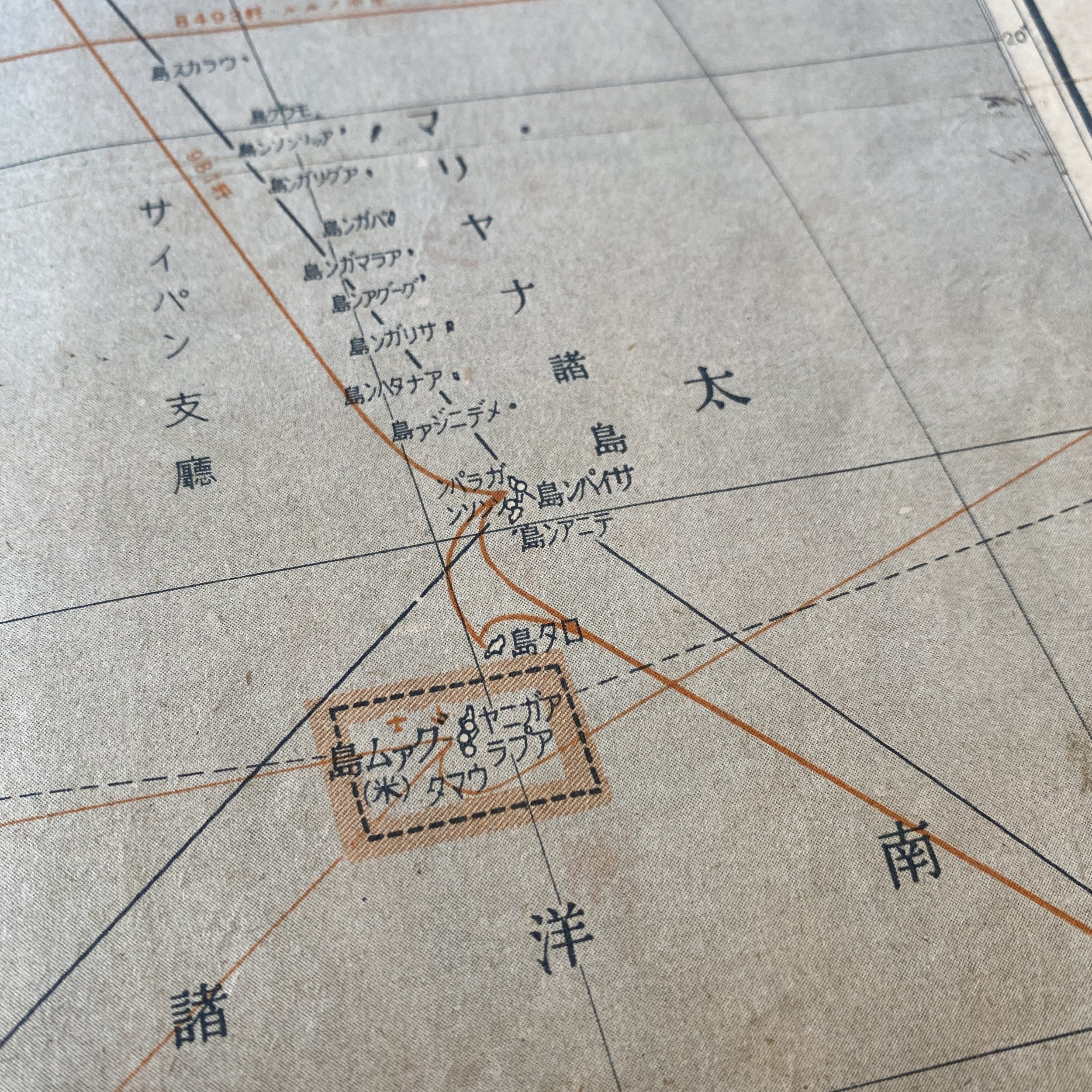









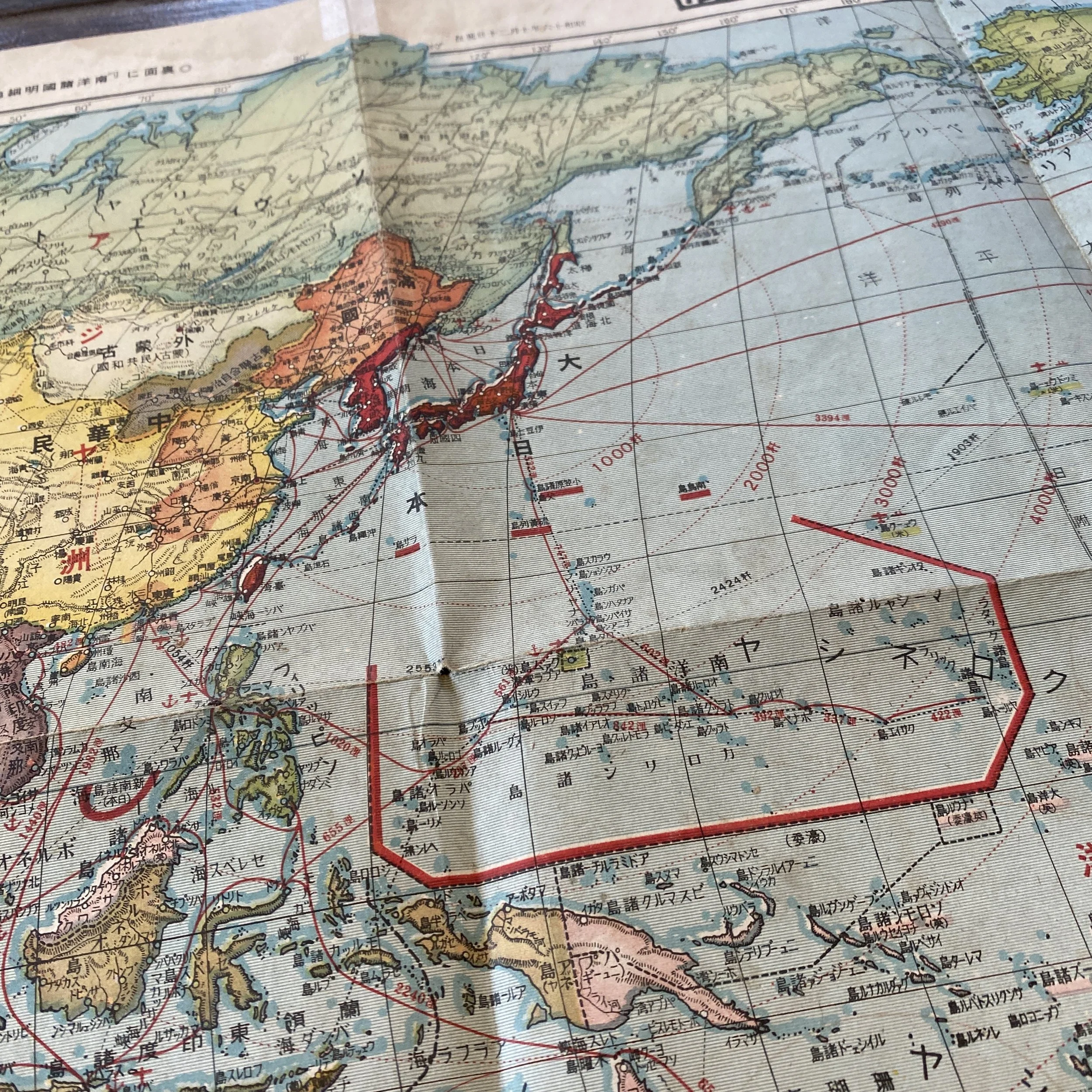

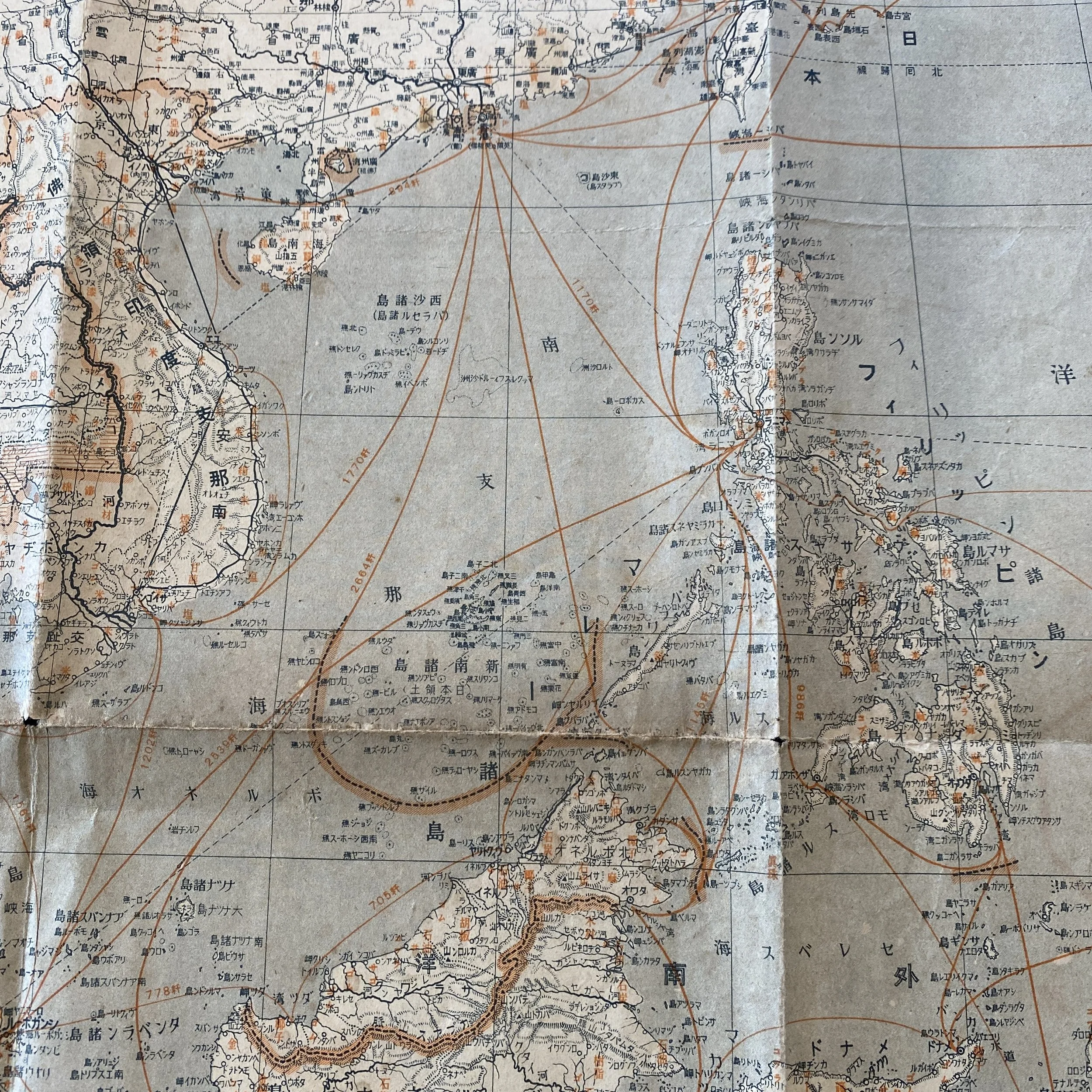
RARE! Original WWII Japanese Campaign Map Pearl Harbor & Pacific Theatre Invasion Progress
Comes with hand-signed C.O.A.
This incredible and museum-grade WWII Japanese map is estimated to have been printed in 1942-1943 and shows an incredible view of the entire Pacific Theater of Operations. This rare double sides map printing shows the recently attacked US Naval base on Hawaii at Pearl Harbor as well as other Japanese military campaigns throughout the Pacific. An identical rare map type is currently on display in the Harvard University rare map collections.
Printed following the Japanese attacks on Pearl Harbor in December of 1941 this map shows the U.S. island of Hawaii and the navigational routes towards the island. On 7 December 1941 (8 December in Asian time zones), Japan attacked British and American holdings with near-simultaneous offensives against Southeast Asia and the Central Pacific. These included an attack on the American fleets at Pearl Harbor and the Philippines, Guam, Wake Island, landings in Malaya, Thailand and the Battle of Hong Kong. By 1942, the Japanese Empire had launched offensives in New Guinea, Singapore, Burma, Yunnan and India, the Solomons, Timor, Aleutian Islands, Christmas Island and the Andaman Islands.
This double-sided map is an incredible condition given its age and has an incredible amount of information. This would make an amazing addition to any WWII or Japanese collection.
1942-1945:
Japanese military strategists were keenly aware of the unfavorable discrepancy between the industrial potential of the Japanese Empire and that of the United States. Because of this they reasoned that Japanese success hinged on their ability to extend the strategic advantage gained at Pearl Harbor with additional rapid strategic victories. The Japanese Command reasoned that only decisive destruction of the United States' Pacific Fleet and conquest of its remote outposts would ensure that the Japanese Empire would not be overwhelmed by America's industrial might. In April 1942, Japan was bombed for the first time in the Doolittle Raid. In May 1942, failure to decisively defeat the Allies at the Battle of the Coral Sea, in spite of Japanese numerical superiority, equated to a strategic defeat for Imperial Japan. This setback was followed in June 1942 by the catastrophic loss of four fleet carriers at the Battle of Midway, the first decisive defeat for the Imperial Japanese Navy. It proved to be the turning point of the war as the Navy lost its offensive strategic capability and never managed to reconstruct the "'critical mass' of both large numbers of carriers and well-trained air groups".
Australian land forces defeated Japanese Marines in New Guinea at the Battle of Milne Bay in September 1942, which was the first land defeat suffered by the Japanese in the Pacific. Further victories by the Allies at Guadalcanal in September 1942, and New Guinea in 1943 put the Empire of Japan on the defensive for the remainder of the war, with Guadalcanal in particular sapping their already-limited oil supplies. During 1943 and 1944, Allied forces, backed by the industrial might and vast raw material resources of the United States, advanced steadily towards Japan. The Sixth United States Army, led by General MacArthur, landed on Leyte on October 20, 1944. In the subsequent months, during the Philippines Campaign (1944–45), the combined United States forces, together with the native guerrilla units, liberated the Philippines. By 1944, the Allies had seized or bypassed and neutralized many of Japan's strategic bases through amphibious landings and bombardment. This, coupled with the losses inflicted by Allied submarines on Japanese shipping routes began to strangle Japan's economy and undermine its ability to supply its army. By early 1945, the U.S. Marines had wrested control of the Ogasawara Islands in several hard-fought battles such as the Battle of Iwo Jima, marking the beginning of the fall of the islands of Japan.